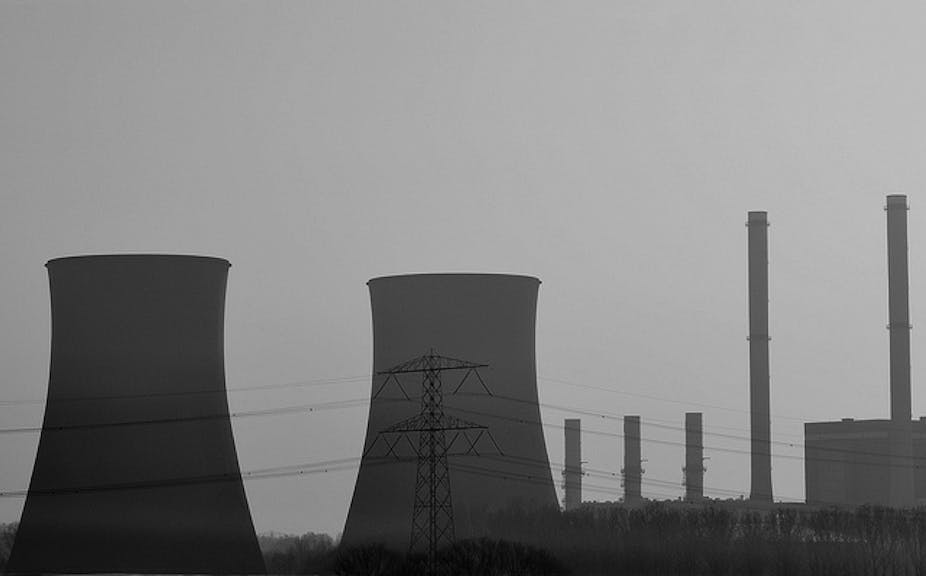Market-distorting fossil fuel subsidies rose 30% from 2010 to 2011, stymying efforts to boost the renewables sector and reduce greenhouse emissions worldwide, a new global report has found.
The 2012 World Energy Outlook, released by the International Energy Agency overnight, also noted that nuclear energy was on the wane in several countries following the Fukushima disaster last year.
The World Energy Outlook, which provides an annual snapshot of energy trends and projects their impact on the climate, said that fossil fuel subsidies totalled over $520 billion last year. Around $88 billion was spent worldwide supporting renewable energy.
“Taking all new developments and policies into account, the world is still failing to put the global energy system onto a more sustainable path. Global energy demand grows by more than one-third over the period to 2035 in the New Policies Scenario (our central scenario), with China, India and the Middle East accounting for 60% of the increase,” the report said.
“Energy demand barely rises in OECD countries, although there is a pronounced shift away from oil, coal (and, in some countries, nuclear) towards natural gas and renewables.”
Solar led the growth in the renewable energy sector but it is not until 2035 that renewables are expected to approach coal as the world’s primary source of electricity.
Production of oil, shale gas and bioenergy was on the rise in the US, the report said.
The report noted that “Japan and France have recently joined the countries with intentions to reduce their use of nuclear power, while its competitiveness in the United States and Canada is being challenged by relatively cheap natural gas.”
“Our projections for growth in installed nuclear capacity are lower than in last year’s Outlook and, while nuclear output still grows in absolute terms (driven by expanded generation in China, Korea, India and Russia), its share in the global electricity mix falls slightly over time,” a trend likely to drive up the fossil fuel import bills and make it harder to meet emissions reduction targets aimed at slowing climate change.
“Successive editions of this report have shown that the climate goal of limiting warming to 2 °C is becoming more difficult and more costly with each year that passes,” the report said.
“Almost four-fifths of the CO2 emissions allowable by 2035 are already locked-in by existing power plants, factories, buildings, etc. If action to reduce CO2 emissions is not taken before 2017, all the allowable CO2 emissions would be locked-in by energy infrastructure existing at that time.”
However, rapid and widespread deployment of energy efficient technologies would give the world until 2022 before that scenario eventuates, the report said, “buying time to secure a much needed global agreement to cut greenhouse-gas emissions.”
“No more than one-third of proven reserves of fossil fuels can be consumed prior to 2050 if the world is to achieve the 2 °C goal, unless carbon capture and storage (CCS) technology is widely deployed.”
John Cook, Climate Communication Fellow at the University of Queensland, said the report’s key message was that “if we continue on our current course, we’re committing ourselves to global warming of 3.6°C.”
“It’s commonly considered ‘safe’ global warming if restricted to no more than 2°C. To put this into perspective, the last time our planet was that warm, sea levels were at least 6 metres higher than current levels. On our current course, we are on track to go well beyond those conditions,” he said.
The good news is that we can achieve great progress in efficiency using existing technology by removing barriers that obstruct the implementation of efficiency measures, he said.
“The clock is ticking. Rapid deployment of energy efficiency measures will buy us five more years.”
Roger Dargaville, Research Fellow at the University of Melbourne’s Energy Research Institute said the report showed that high oil prices and lack of a price on carbon in North America are driving more investment in oil and gas, putting the US on track to become the world’s largest producer of oil by the end of this decade.
“Much of the world is moving in the right direction with improving carbon intensity of the economy, but the dramatic increase in projected fossil fuel use is putting us on a dangerous trajectory of unavoidable climate change and efforts the get the US and Canada onto a better path are urgent,” he said, adding that the recent US election result may be cause for optimism.
“I would expect that putting higher prices on carbon and energy will see a swing back in favour of nuclear. In the meantime, gas is the likely replacement [for nuclear power], but building new gas-fired generators now just locks us into a carbon intense trajectory.”

